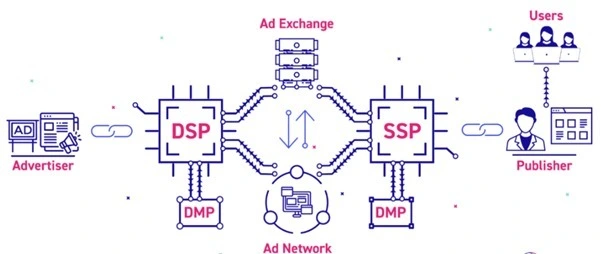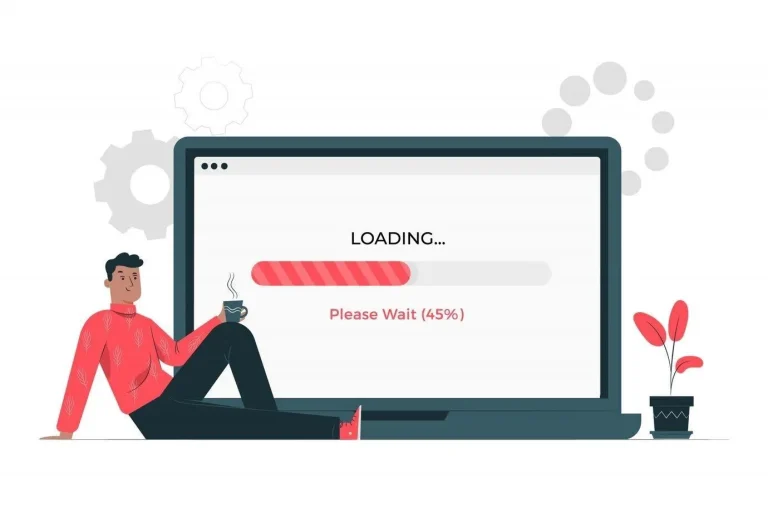Supply-side platforms (SSPs) are indeed your money-making sidekick as a publisher. We all know that SSPs help with yield optimization. But is that the whole story?
No, there’s more! SSP isn’t just about making money. It’s about making smart money.
Imagine your SSP as a digital auctioneer, hosting lightning-fast auctions whenever someone lands on your site. It’s scanning your website visitors, figuring out what they fancy, and then it’s auction time. Here is when advertisers bid to impress your visitors with their ads.
SSPs use tons of visitor data to select ads that grab attention and make your audience happy. But it’s not like one-size-fits-all situations – your SSP lets you set the rules. From giving VIP treatment to your favorite advertisers to controlling the types or frequency of ads, your SSP has your back. Managing ad slots is just a part of the game, and SSP is the engine turning your website into an ad-revenue masterpiece.
Do you still have questions? This blog is the ultimate guide on supply-side platforms (SSPs). So, get ready to learn in detail about SSP and unlock the full potential of your ad revenue.
Table of Contents
- What Are Supply-Side Platforms?
- How Different Is a Supply-Side Platform from a Demand-Side Platform?
- What Are the Key Functions of a Supply-Side Platform?
- How Does a Supply-Side Platform (SSP) Work?
- How Does SSPs Benefit Publishers?
- What Are the Challenges That Publishers Face When Using an SSP?
- So, How to Choose the Right Supply-Side Platform (SSP)?
What Are Supply-Side Platforms?
Supply-side platforms (SSP) help digital publishers manage, optimize, and sell their ad inventories to demand partners and earn ad revenue. With an SSP, you can show various engaging ad formats to your visitors and monetize your websites and apps.
An SSP connects website owners to companies or advertisers wanting to buy ad space on their websites. Utilizing real-time bidding (RTB), the SSP conducts quick auctions every time a visitor lands on the website, determining the highest bid from interested companies for the ad space.
This dynamic process ensures optimal revenue for the website owner.
Moreover, the SSP plays a crucial role in maintaining control, allowing the website owner to dictate the quality and types of ads displayed on their site, making it a versatile tool for maximizing earnings and ensuring a tailored ad experience.
How Different Is a Supply-Side Platform from a Demand-Side Platform?
Understanding the dynamics between supply-side platforms (SSP) and Demand-Side Platforms (DSP) is like decoding the language of online marketing.
Let’s break down the distinctions between these two crucial players in programmatic advertising:
| Aspect | Supply-Side Platform (SSP) | Demand-Side Platform (DSP), |
| Primary Focus | Publishers and their inventory. | Advertisers and effective ad buying. |
| Functions | Monetization of publisher inventory, RTB, inventory management, and optimization. | Buying and optimizing ad inventory, audience targeting, and data utilization. |
| Purpose | Maximize revenue for publishers through effective inventory management. | Assist advertisers in reaching target audiences efficiently. |
| Real-Time Bidding (RTB) | Auctions ad space for maximum revenue. | Bids on ad inventory as per advertiser’s goals and target audience. |
| Data Utilization | Optimizes publisher inventory with data for better ad placements. | Targets specific audiences using data for precise ad delivery. |
| Collaboration | Works alongside DSPs for comprehensive advertising strategies. | Collaborates with SSPs to create cohesive cross-channel campaigns. |
| Ad Inventory Management | Actively manages and optimizes publisher inventory. | Selects and purchases ad inventory that aligns with advertiser goals. |
What Are the Key Functions of a Supply-Side Platform?
Supply-side platforms (SSPs) serve crucial functions to facilitate efficient ad inventory management and maximize revenue.
Here are some of the main functions of an SSP:
1. Ad inventory management: SSPs manage the available ad space on your website, ensuring efficient allocation and delivery of advertisements. SSPs use algorithms to prioritize ad placements based on user behavior, historical performance, and real-time demand.
2. Yield optimization: SSPs aim to maximize the revenue generated from each ad impression by dynamically adjusting pricing in response to market demand. Yield optimization algorithms in SSPs analyze historical data to predict optimal pricing for different audience segments, enhancing overall revenue.
3. Real-time bidding (RTB): RTB is a key feature that enables advertisers to bid on ad impressions in real-time auctions, allowing the highest bidder to secure the placement. SSPs conduct millions of real-time auctions per second, providing a seamless and efficient process for advertisers to compete for ad space so that you, as a publisher, get the best yield for your ad inventory.
4. Data analysis: SSPs analyze user data to understand preferences, behaviors, and demographics, allowing for targeted ad placements. Advanced platforms leverage machine learning algorithms to refine their understanding of user behavior continuously, improving ad targeting accuracy.
5. Rule setting: You can set rules within the SSP, such as prioritizing certain advertisers or controlling ad frequency, to align with your business goals. Implementing custom rules ensures a tailored approach to ad delivery based on your preferences.
6. Monetization strategies: SSPs also support diverse monetization strategies, including programmatic advertising, header bidding, preferred deals, open auctions, and private marketplaces. There may be more strategies depending on the specific features and capabilities of each SSP. You can choose the best strategy for your ad inventory based on your objectives, audience, and content.
7. Ad quality control: SSPs implement measures to ensure the display of high-quality, relevant ads, preserving a positive user experience. It also employs ad verification tools to filter out potentially harmful or irrelevant advertisements, maintaining the integrity of your content.
8. Reporting and analytics: SSPs offer detailed reports on ad performance, user engagement, and revenue, aiding you in making data-driven decisions. Each SSP analytics dashboard is different, but they aim to provide granular insights, including click-through rates, viewability metrics, audience demographics, etc.
9. Integration with ad exchanges: SSPs integrate with ad exchanges to access a broader pool of advertisers, increasing competition and demand for ad inventory. Major SSPs often have global reach, connecting you with advertisers from different geographic regions and industries.
Point to ponder:
SSPs and ad exchanges used to be distinct, but that’s changing. Many SSPs are acquiring top ad exchanges to provide a one-stop service. This trend is leading to fewer publishers using standalone exchanges. Some SSPs that have added ad exchange services include Google Ad Manager, Amazon Publisher Services, and OpenX.
10. Header bidding support: SSPs support header bidding, a technology that allows multiple advertisers to bid on ad inventory simultaneously before the ad server decides. With header bidding, you, as a publisher, can reduce latency and increase competition, leading to improved ad rates and revenue.
11. Dynamic ad allocation: SSPs dynamically allocate ad space based on real-time demand, optimizing revenue potential by adjusting to changing market conditions. These dynamic ad allocation algorithms respond to fluctuations in demand, ensuring efficient use of available ad inventory.
12. Cross-platform capabilities: SSPs extend support for various platforms, including desktop, mobile, and connected devices, to reach a wider audience. They often use responsive ad formats, ensuring seamless ad delivery across different devices and screen sizes, enhancing the overall user experience.
How Does a Supply-Side Platform (SSP) Work?

-
Step one: Ad inventory consolidation
The initial phase of a supply-side platform (SSP) involves consolidating the available ad spaces on your website or applications and creating a comprehensive inventory. This inventory becomes the foundation for the subsequent steps in the process.
-
Step two: Real-time bidding on ad exchange
Once the inventory is established, the SSP introduces it to potential advertisers through a programmatic platform commonly known as an ad exchange.
Here, the ad exchange acts as a marketplace where advertisers engage in real-time bidding (RTB). RTB is a dynamic process where each ad impression undergoes rapid-fire auctioning, with the highest bidder securing the opportunity based on factors such as ad size, location, format, and audience data.
-
Step three: Enhanced competition and transparency
In the third step, the SSP connects multiple ad exchanges, ad networks, and demand-side platforms (DSPs). This strategic connection amplifies competition among bidders, encouraging transparency in the process.
The aim is to secure the best price for each impression. As a valuable tool, a DSP assists advertisers in purchasing ad inventory from the ad exchanges, aligning with their targeting criteria and campaign objectives.
-
Final step: Publisher empowerment and optimization
The last leg of the SSP’s journey involves empowering publishers to manage and optimize their ad inventory.
You can gain control and flexibility by leveraging features such as floor prices, ad quality filters, preferred deals, private marketplaces, and header bidding.
They can set minimum prices, curate the type and quality of ads displayed, negotiate exclusive deals with chosen advertisers, and offer their inventory to multiple demand sources simultaneously. This strategic approach occurs before sending the request to their ad server.
How Does SSPs Benefit Publishers?

Utilizing an SSP translates to tangible benefits, including heightened ad fill rates, increased ad revenue, reduced operational costs, and greater control over ad inventory.
Let’s take a detailed look at some of the top benefits:
- Selling inventory automatically: Using SSPs, you can eliminate manual work from their sales process. You can automate the auction and delivery of your ad inventory to the highest bidder without negotiating with multiple advertisers or ad networks.
- Increasing ad revenue: By connecting to multiple demand sources, SSPs can increase the competition and transparency among the bidders, helping you to find the best price for each impression. SSPs also allow you to use dynamic pricing and header bidding, which are techniques that can optimize the yield and revenue of their ad inventory.
- Controlling ad quality and preferences: By using SSPs, you can set rules and filters for their ad inventory, such as minimum prices, ad formats, ad sizes, ad categories, and ad quality. This way, you can ensure that the ads they display on their websites are relevant, appropriate, and safe for their audience.
- Accessing reports and analytics: With SSPs, you can access detailed and real-time data on their ad performance, such as impressions, fill rates, eCPM, revenue, and CTR. You can also see who is bidding and how much they are spending to purchase your ad inventory. These data can help you identify issues, optimize your settings, and test new strategies.
What Are the Challenges That Publishers Face When Using an SSP?
Some of the challenges that you as a publisher might face while using a supply-side platform (SSP) are as follows:
- Data privacy concerns: With the rise in data-driven advertising, concerns about data privacy are growing. You must comply with various regulations and standards, such as GDPR, CCPA, and IAB TCF, to protect your users’ personal data and avoid legal issues. You also need to ensure that your SSP partners respect the users’ consent and preferences and do not misuse or leak their data.
- Technical issues: Navigating the technical issues is key. Bandwidth and latency issues can hamper the seamless integration of SSPs. Additionally, ensuring compatibility with various ad formats poses a considerable obstacle for publishers like you aiming for a diverse advertising portfolio.
- Monetization hurdles: Monetization, the lifeblood of publishers, faces hurdles in the form of ad fraud and invalid traffic. Striking a delicate balance between maximizing revenue and preserving user experience becomes daunting. You must employ strategies to combat these issues without compromising on either front.
- Ad quality and preferences: SSPs may expose you to the risk of showing low-quality or inappropriate ads to your users, which could harm your reputation and user experience. As a publisher, you need to set rules and filters for your ad inventory, such as minimum prices, formats, sizes, categories, and quality. You also need to check their SSP partners’ ad quality and preferences and ensure that they match their standards and expectations.
- Ad blocking impact: The rise of ad blockers poses a significant threat to publishers relying on SSPs. You must understand the impact and implement strategies to counteract ad blockers to ensure revenue streams remain uninterrupted.
- User experience: Intrusive ads can compromise the user experience, leading to dissatisfaction and potential loss of audience. You may face the challenge of balancing between revenue goals and a positive user experience.
- Managing multiple SSPs: Effective management requires strategic planning for publishers wanting to explore multiple SSPs, especially for those new to programmatic advertising. You need to be proficient in real-time bidding, ad inventory, and data interpretation is essential. Choosing the right SSP, aligning it with specific needs, and possibly integrating multiple SSPs for varied demand sources adds complexity. Yet, with careful planning and the right expertise, publishers can get the full potential of their digital spaces.
Despite the challenges, you can overcome them by identifying the right SSP that meets all your essential criteria.
So, How to Choose the Right Supply-Side Platform (SSP)?
Here are some of the main aspects that you should look for while choosing the right SSP:
- Features: You should choose an SSP that offers the features that are important to you, such as ad trafficking, ad targeting, ad reporting, header bidding, private marketplaces, and dynamic pricing. These features can help you to manage and optimize your ad inventory and to increase your ad revenue.
- Pricing: You should compare the costs and benefits of different SSPs and negotiate the best terms for your business. SSPs may charge publishers based on different models, such as percentage of revenue, CPM, or fixed fees. You should also consider the service quality and support that the SSP provides.
- Transparency: Choose an SSP that provides you with detailed and real-time data on your ad performance, such as impressions, fill rates, eCPM, revenue, and CTR. You should also see who is bidding and how much they spend to purchase your ad inventory. This can help you to identify issues, optimize your settings, and test new strategies.
- Integration: The SSP you select should be easy to set up and use. It should connect to multiple ad exchanges, DSPs, and ad networks. You should also check if the SSP supports the ad formats and sizes you want to sell and if it integrates well with your website, app, and other platforms and tools.
- Quality: Pick an SSP that respects your users’ consent and preferences and does not misuse or leak their data. You should also be able to set rules and filters for your ad inventory, such as minimum prices, formats, sizes, categories, and quality. This can help you to ensure that the ads you display on your website are relevant, appropriate, and safe for your audience.
Here’s a quick tip – An ad monetization partner can play a pivotal role in optimizing a supply-side platform (SSP). They can contribute by leveraging their expertise to fine-tune various aspects, such as ad inventory management and real-time bidding strategies, and ensure compatibility with different ad formats.
A proficient partner can assist in selecting the most suitable SSP based on your needs and goals. Their insights and strategic guidance can enhance the overall performance of the SSP, leading to improved monetization outcomes for you as a publisher.
We hope you learned something new and useful about supply-side platforms in programmatic advertising. If you are interested in more articles like this, please visit our website.






















